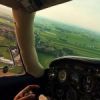J-bar folks: How do you handle gear on a go-around?
-
Members Online
- toto
- haymak3r
- bonal
- Bunti
- raymondscott0321
- aerolithium
- Bartman
- kaba
- AJ88V
- KLRDMD
- Jason 1996 MSE
- jetdriven
- jennifashby
- Hank
- chrisburdzy98
- RescueMunchkin
- Thomas_1981
- Stealth Mooney
- VetRepp
- ProtoFly
- bencpeters
- IvanP
- AspiringOwner
- 1980Mooney
- N201MKTurbo
- hammdo
- PT20J
- Rsmithref
- DMM
- eman1200
- TCC
- Kelpro999
- AndreiC
- 802flyer
- ArtVandelay
- PierreL
- LANCECASPER
- phrogpilot73
- mhoffman
- Jetman
- bluehighwayflyer
- Max Clark
- Vance Harral
- Guy123


Recommended Posts
Join the conversation
You can post now and register later. If you have an account, sign in now to post with your account.